Cristo Velato: l’opera d’arte più misteriosa e amata di Napoli
Veiled Christ : the tickets most chosen by travelers
Veiled Christ: A unique marvel in the world
The Veiled Christ is one of the most extraordinary and captivating works of Italian artistic heritage. Located in the Sansevero Chapel, in the heart of Naples' historic center, the Veiled Christ is a sculptural masterpiece that enchants visitors with its incredible craftsmanship and profound emotional impact.
Created in 1753 by sculptor Giuseppe Sanmartino, the Veiled Christ represents the body of Christ, covered by a transparent marble veil that appears as light as silk. This extraordinary piece is surrounded by mystery and legend: some believe the veil was created through an alchemical process, adding to the fascination surrounding Raimondo di Sangro, the genius and controversial prince who commissioned the work.
Visiting the Veiled Christ is an immersion into the history, art, and mystery of Naples. The intimate and solemn atmosphere of the Sansevero Chapel makes the experience unforgettable, leaving visitors speechless in the presence of such beauty and artistic perfection.
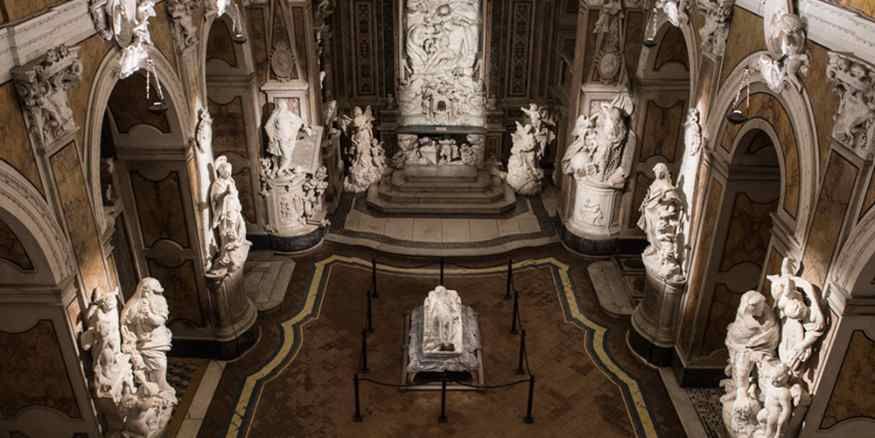
Discover all other experiences
Useful information for visiting the veiled Christ
The Sansevero Chapel is one of Naples' most visited attractions, and tickets often sell out quickly. Planning ahead is essential to fully enjoy the experience. Here are some options for organizing your visit:
Opening hours: The Sansevero Chapel is open daily from 9:00 AM to 7:00 PM, with the last entry at 6:30 PM.
Skip-the-line tickets: Ideal for avoiding long queues, especially during peak times.
Guided tours: Perfect for diving deeper into the history and secrets of the Veiled Christ and the Sansevero Chapel. An expert guide will help uncover hidden details and curiosities.
Combo tickets: Many options include access to other attractions in Naples' historic center, such as the National Archaeological Museum or the Monumental Complex of Santa Chiara.
Ticket prices: Standard tickets cost €8, with discounts for students and young visitors. Children under 6 years of age enter for free.
Dress code: As it is a sacred site, respectful attire is required, with shoulders and knees covered.
Accessibility: The chapel's nave and sacristy are accessible to visitors with reduced mobility, but the underground Cavea, housing the Anatomical Machines, is not accessible due to narrow staircases.
Booking tickets online in advance is the best way to secure your entry, especially on weekends or during holidays.
-Skip-the-line access to see the iconic Veiled Christ sculpture.
-Opportunity to view other significant works of art within the Chapel, such as the statues of Modesty and Disillusionment, as well as the "Anatomical Machines" located in the underground Cavea.
-Guided tour in a small group (up to 22 people) available in English, French, and Italian.
-Audioguide available in Italian, English, French, Spanish, German, and other languages.
-Hotel pick-up and drop-off.
-Gratuities.
Veiled Christ : tips for your visit
How to get to the Veiled Christ
-On foot: If you're in the historic center, the Veiled Christ is easily reachable. From Piazza San Domenico Maggiore, it’s just a short walk.
-By metro: Take Line 1 and get off at the Dante station. From there, it’s a 10-minute walk to the Sansevero Chapel.
-By bus: Several urban lines serve the area. Get off near Piazza San Domenico Maggiore and continue on foot.
-By taxi or ridesharing services: Convenient, especially if you’re coming from other parts of the city. Simply indicate “Sansevero Chapel” as your destination.
Naples' historic center is a pedestrian-friendly area full of wonders, so walking is a great way to discover other attractions along the way.
The best experiences in Naples
Best attractions around Veiled Christ
all entrance tickets for the most popular Italian attractions
Capri
NaplesPompeii Ruins
NaplesVesuvius
NaplesPaestum Archaeological Park
NaplesRoyal Palace of Caserta
NaplesPoseidon Thermal Gardens
NaplesNaples Undergorund
NaplesVeiled Christ: discovering the most visited marble statue in Naples
Have you ever seen the Veiled Christ? Find out more and take advantage of our offer to take a walking tour of Europe's largest historical centre.
Read more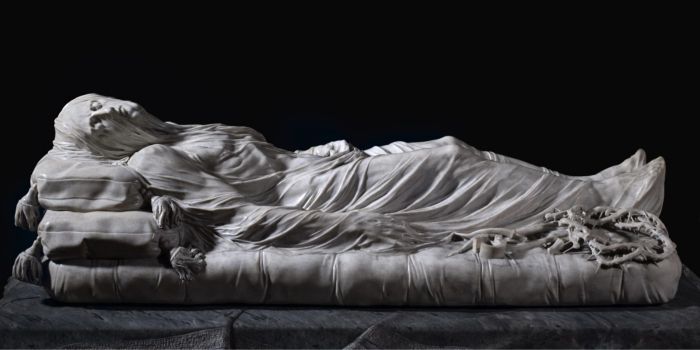
Frequently asked questions about visiting the Veiled Christ
How to visit Sansevero Chapel and the Veiled Christ
Visiting the Veiled Christ means immersing yourself in a unique experience that combines art, history, and mystery. Located in the evocative Sansevero Chapel, in the heart of Naples’ historic center, this masterpiece attracts thousands of visitors every year, captivated by its incredible beauty and the aura of legend surrounding it.
The Sansevero Chapel is not just the home of the renowned Veiled Christ but a true treasure trove of artistic and symbolic wonders. Upon entering, you are greeted by a solemn and mystical atmosphere. At the center of the nave lies the Veiled Christ, a breathtaking sculpture: the perfection of the marble, which seems to transform into silk, showcases the genius of Giuseppe Sanmartino, who masterfully created the illusion of a transparent veil through sculptural art.
The Veiled Christ was created in 1753 when the Neapolitan sculptor was commissioned by Prince Raimondo di Sangro, known for his visionary spirit, passion for science, and alchemy. The sculpture depicts the dead Christ covered by a thin veil carved entirely from marble, which appears almost real due to its extraordinary transparency and delicacy. Sanmartino exceeded all expectations, creating a work that embodies not only the sorrow of death but also the promise of resurrection.
The chapel, built at the behest of Raimondo di Sangro, Prince of Sansevero, also houses other enigmatic works, such as the allegorical statues that adorn its interiors. Among these, "Disillusionment" and "Modesty" stand out as masterpieces of technique and symbolism. In the underground Cavea, visitors can find the haunting Anatomical Machines: two human skeletons with perfectly preserved circulatory systems, which remain a subject of speculation about how they were created.
Visiting the Veiled Christ is more than just a journey through artistic beauty; it is also an opportunity to reflect on the mystery of life and the symbolic depth of every detail. With the help of audioguides or guided tours, you can uncover curiosities and secrets that make this place one of a kind. Furthermore, the central location of the chapel allows you to complete your experience by exploring the streets of Spaccanapoli and other wonders of the historic center.
Curiosities about the veiled Christ
The marble veil and the alchemical mystery: One of the most fascinating curiosities about the Veiled Christ is the realism of the marble veil. Legend has it that Raimondo di Sangro, Prince of Sansevero, used an alchemical process to transform a real fabric veil into marble through his esoteric knowledge. However, recent studies have confirmed that the entire work was sculpted from a single block of marble by the artistic genius of Giuseppe Sanmartino, showcasing unparalleled sculptural skill.
A symbol of faith and redemption:The Veiled Christ is much more than a sculpture; it is a work steeped in religious symbolism. The transparency of the veil symbolizes resurrection—the transition from death to eternal life. This representation profoundly moves visitors, who often remain in silence, captivated by such beauty and spirituality.
The Sansevero Chapel: a place rich in esoteric symbols: The chapel is not only a place of worship but also a site filled with alchemical and Masonic references, all conceived by Raimondo di Sangro. From the frescoed ceilings to the intricate flooring, every element hides symbolic meanings. For example, the labyrinth-like floor represents the journey toward knowledge.
The allegorical atatues: Beauty and Meaning: Alongside the Veiled Christ, the chapel houses allegorical statues like "Modesty" and "Disillusionment." These works not only demonstrate extraordinary artistic skill but also convey profound moral and spiritual messages. "Modesty," for instance, represents feminine virtue and the purity of the soul, while "Disillusionment" depicts the struggle to free oneself from the deceptions of earthly life.
The anatomical Machines: art or dark science?: In the underground Cavea are the Anatomical Machines, two human skeletons with perfectly preserved circulatory systems. These models, attributed to Raimondo di Sangro’s scientific studies, have sparked debates for centuries. Some believe they were created with artificial materials, while others hypothesize the use of advanced anatomical preservation techniques.
The veil as a source of inspiration: The art of the Veiled Christ has inspired many artists and creatives over the centuries. Writers, painters, and sculptors have drawn inspiration from the perfection of the veil for their works, making the Veiled Christ an icon not only of religion but also of art.
The 2008 restoration:The Veiled Christ underwent a significant restoration in 2008, during which accumulated impurities were removed. The restoration brought back the marble’s original brilliance, allowing visitors to fully appreciate every intricate detail of the sculpture.
The legend of ungraduated students: An intriguing curiosity associated with the Veiled Christ involves a superstition prevalent among Neapolitan university students. It is said that visiting the Veiled Christ before taking an exam can jeopardize one's academic journey, potentially delaying or even preventing graduation. This belief has ancient roots and is linked to the figure of Prince of Sansevero, Raimondo di Sangro, known for his esoteric knowledge. According to legend, the Prince cast a curse on medical students who visited the Sansevero Chapel before exams, fearing that the artworks present, such as the Anatomical Machines and the Veiled Christ, might confuse them and instill doubts in their minds. Over time, this superstition extended to all university students, becoming an integral part of local folklore. Despite the lack of concrete evidence, many students prefer to avoid visiting the Veiled Christ before completing their studies, so as not to tempt fate.






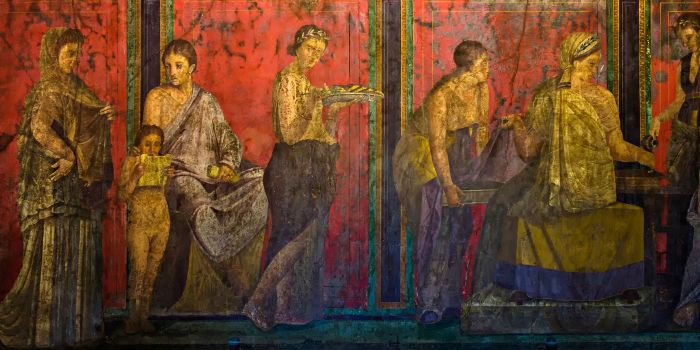





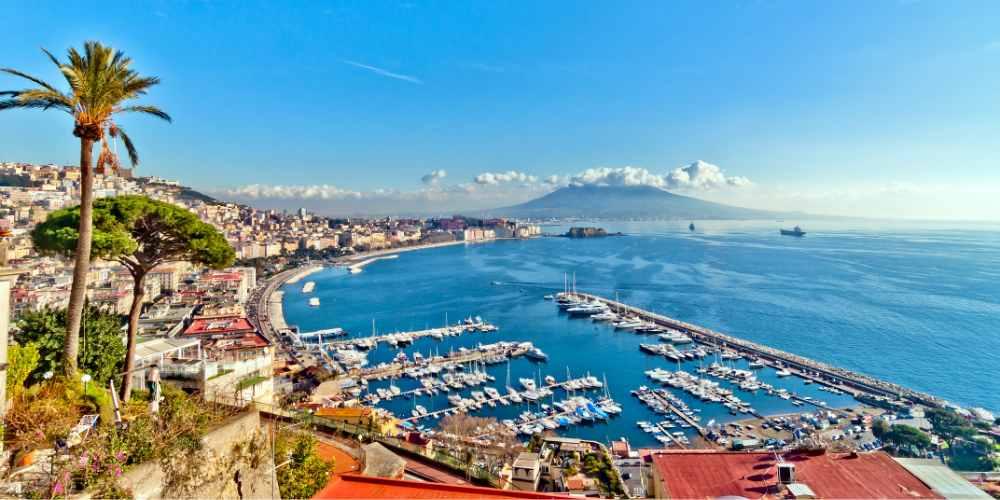
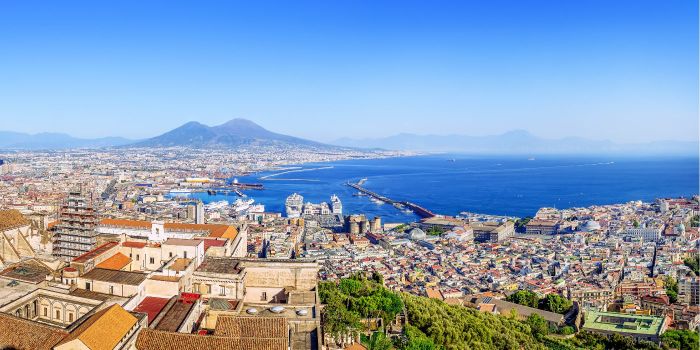









Marika Camposano
The artistic mastery of the Veiled Christ, a sculpture whose marble appears like silk, and the mystical atmosphere of the Sansevero Chapel, in the heart of Naples, are the key elements of an emotional journey through art, legend, and spirituality that will make this experience unforgettable.